The Nazi-Puncher's Dilemma
WASHINGTON ― There is a growing desire in this country to punch Nazis in the face. At least, this is what I hear from people who punch Nazis in the face. Some gleefully send me videos of other people punching Nazis in the face, such as the one from September featuring a Nazi in Seattle who threw a banana at a man and, in return, ate a very professional right cross. The Nazi fell to the ground and lay there unconscious. When he came to, he removed his Nazi armband and shuffled off.
Anyone following the news knows who’s doing the bulk of this Nazi-punching: “antifa.” It’s an esoteric and often confounding term. Although short for “anti-fascist” — an expansive category that one would imagine includes millions of Americans — “antifa” has quickly come to connote a very specific stereotype: a black-clad, violent, leftist subversive.
Most Americans first learned about antifa in February, when what looked like a gang of ninjas set fires and broke windows to stop Milo Yiannopoulos, a race-baiting former Breitbart News editor, from speaking on the University of California, Berkeley campus, where he reportedly intended to out undocumented students. About a week after the deadly white supremacist riot in Charlottesville, Virginia, President Donald Trump seized on antifa as Exhibit A in his ongoing efforts to blame “both sides” for the violence. During a speech in Phoenix, Trump played up the word’s alien vibrations as if he were, to borrow a Trevor Noah joke, introducing a band at the Latin Grammys: “An-TEE-fa!”
Their notoriety may be new, but antifa have a long, complicated history of militant community activism. This history has involved a lot of Nazi-punching, but it’s also about much more than that. In the course of my reporting on the alt-right over the past year, I’ve talked to several older anti-fascists who have been doing the “work” for decades. They told me about pitched battles in the street with Nazis from another era, about raiding Klan rallies under cover of darkness, about cops in cahoots with white supremacists, and about Nazis torching the homes of activists and killing antifa in the desert. I heard about duffel bags filled with barbells and knives and a legendary anti-fascist who was attacked by a brass-knuckle-wielding Nazi and responded by breaking the fascist’s teeth with a Maglite flashlight. These exploits sounded fantastical, but when I looked into them, they were true.
The antifa vets were more strategic than I anticipated and obsessively knowledgeable about politics. They all had extreme personalities, although time had precipitated out a little of their tannin. Some had children and normal lives. The Maglite legend, I’d heard, was now a kids’ soccer coach. Still, they were tight-lipped about their activities, some of which were illegal, and were often misunderstood.
Anti-facism is a loose-knit, decentralized movement containing numerous organizations and ideologies that even insiders struggle to explain. For starters, not all people who identify as anti-fascists describe themselves as antifa. Most antifa are anarchists, but there are also socialists and communists, who divide further into Maoists, Marxists, Trotskyists and Stalinist “tankies.”
What unites them is a belief that dangerous elements of the far right must be driven from the public square, even if by force. And for two decades, beginning in the mid-1980s, that’s what antifa attempted to do, almost entirely out of the public eye. They put neo-Nazis and other white supremacists on their heels in cities and suburbs around the country, forcing many of them underground or into retreat. (Other contributing factors: litigation by civil rights organizations, the demise of key white supremacist leaders and law enforcement roundups.)
Over the past year, as fascists and racists have reemerged, emboldened by the rise of Trump, many old-school antifa have laced up their boots again. But now they find themselves facing a new enemy. The current crop of neo-Nazis and white nationalists prefers tattersall to tattoos and come off more like Young Republicans than Hammerskins. They are proficient in social media and online messaging, which presents a challenge for antifa used to fighting in the shadows.
“When you have Richard Spencer getting punched in the face, millions of people see it,” said Oren Segal, the director of the Anti-Defamation League’s Center on Extremism. Millions of people might also feel a pang of sympathy for Spencer. Others might use the video to demonize the left or justify a crackdown on public protest. In an age of insta-propaganda, it’s hard to know: Is punching Nazis actually helping the Nazis?

If New Orleans gave us jazz, Minneapolis gave us antifa. Gangs of skinheads scrapping in cold Midwestern alleys — that’s how organized anti-fascism in America was born, in the counter-culture punk scene of the 1980s. The skinheads listened to ska and punk and wore steel-toed Doc Martens and Fred Perry shirts. The original skinhead movement was multiracial and working class, and it drew heavily from Jamaican “rude boy” culture. But in the 1980s, white power groups invaded the scene, giving rise to thousands of “boneheads” — neo-Nazi skinheads.
In Minneapolis, one bonehead set called the White Knights started beating up minority kids and menacing leftists in the punk rock crowd. It was stomp or get stomped, and a multiracial crew of “traditional” skins called the Baldies decided to fight back. The Baldies’ turf was the Uptown neighborhood. If the Baldies caught Nazis in Uptown, they’d tell them to leave. If the Nazis didn’t leave, the Baldies put a hurt on them. The White Knights cleared out of Uptown. Before long, they cleared out of Minneapolis.
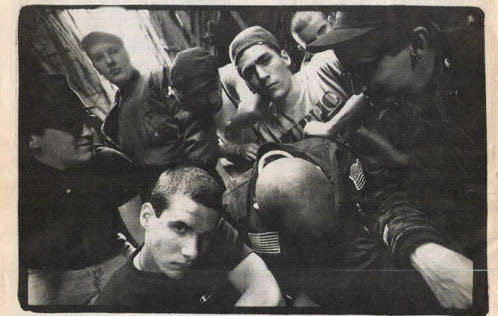
In 1987, the Baldies joined with other leftist and anarchist activists to form Anti-Racist Action, which would become the mother organization for anti-fascism in America. The ARA focused not only on neighborhood Nazis but also on systemic racism. “We go where they go” was the ARA’s first guiding principle, and the organization’s tactics evolved beyond fisticuffs. ARA members painted over racist graffiti and disrupted the sales of white power music. They put out political literature, held demonstrations and did door knocks, volunteered in schools to educate kids about racism, protested wars and did environmental activism and labor organizing. One of the ARA’s priorities was defending reproductive rights. Members regularly stood guard outside abortion clinics, which the far right menaced with Nazi muscle.
The ARA also pioneered a tactic known today as doxing — exposing fascists and racists in order to shame them in their communities. Back then, it was a lot more labor-intensive. “When you see someone passing out white supremacist flyers or not getting prosecuted for hate crimes, you dig deeper and try to find out who the person is,” explains an anti-fascist in western Pennsylvania with two decades of experience who goes by Lady. “We would make a list of their actions against our friends, neighbors and the community. We’d write it into a little story and put it on a flyer with a picture of them we’d usually have to snap ourselves. Then we’d walk around their community and put the flyer on light poles and cars. We’d usually call it something like, ‘Meet your neighborhood racist.’”
To ARA members, there was no point expecting help from the cops, many of whom antifa knew were themselves racist. And they dismissed liberals as the same kind of pearl-clutching appeasers who’d allowed Hitler and Mussolini to seize power in the 1930s. Antifa would go it alone. By 1998, ARA reportedly had more than 100 chapters and 2,000 members across North America, as well as several newspapers and a hotline to receive tips about white supremacists. Its policy on fascists was simple: Don’t allow white supremacists any platform to normalize a violent ideology. As Gerry Bello, a longtime member of Columbus ARA in Ohio, put it: “Hitler himself said the only way you could have beaten us if you’d smashed us off the street from the very first day and with the utmost brutality.”
Antifa weren’t exaggerating the threat of violence. Many remember the night in 1998 when two women lured Dan Shersty and Lin “Spit” Newborn, two ARA members, into the desert near Las Vegas. Instead of a party, the young antifa found a group of neo-Nazis. According to media accounts, Shersty was barely out of his car when a gun blast opened up his chest. The fascists dragged Newborn deeper into the desert and shot him to pieces. Only one of the neo-Nazis, John “Polar Bear” Butler, was convicted of the murders. Another person later took a plea deal.
The violence, however, cut both ways. Although antifa tended to show more restraint on the battlefield, they still put plenty of Nazis in the hospital. “Shit happens,” Bello explains. “These are fights involving weapons. Sometimes one of them will catch a right proper boot party. There’s quite a few times where if we wanted to put them in the morgue they would be in the morgue.”
Perhaps the first time that antifa really entered public view was during the protests against globalization at the 1999 World Trade Organization meeting in Seattle, when a small contingent of masked anarchists in black famously smashed up police cars and the windows of corporate offices in acts of “symbolic violence.” (Many antifa view capitalism as an engine of systemic racism.) The “Battle of Seattle” was essentially the American debut of the “black bloc” tactic, which was first used in Germany. The idea was that if the entire bloc dressed in black and wore masks, a few activists could vandalize property and then blend anonymously back into the ensemble, making it almost impossible for police to figure out whom to arrest. From that point, black bloc became the de facto uniform for antifa when they deployed in large groups.
Like they did in York, a small blue-collar city in south-central Pennsylvania and the site of a historic antifa victory.
In 2002, Matt Hale, the leader of a major white supremacist organization, the World Church of the Creator, staged a rally in a mostly black and Latino part of York. His purpose was to support York’s mayor, Charlie Robertson. At the time, Robertson was under investigation for his connection to a murder that occurred during a deadly race riot in York in the 1960s. Robertson would later admit that while serving as a police officer during the riot, he had shouted “White power!” to an angry mob. He had also allegedly supplied ammunition to white gang members and told them to “kill as many niggers as you can.” The gang members shot a black woman to death. None of them was ever charged — but a deathbed confession by one of the gangsters almost 30 years later had finally exposed Robertson’s involvement.
Hale’s rally drew well over 100 white supremacists to York. Antifa showed up in equivalent or greater numbers, according to multiple participants. As the anti-fascists walked into York, local black teenagers emerged from their homes, ready to join them in battle. Antifa helped them don masks, according to one activist who was there. This is what antifa say they work hardest to achieve: a community empowered to defend itself, with anti-fascists playing a supporting role.
Hale was speechifying inside a library, with bonehead foot soldiers posted outside. Riot police and state troopers were there to keep the peace. But when smaller groups of Nazis began slipping off to the side of the library, antifa pursued them through alleys with the guidance of the locals. “It broke up into several small unit combats all over the city for hours,” Bello says. “They have this thing, I’ve only seen it in York. You know those old metal garbage cans? They had this way to skip them off the ground and have them come up at teeth height.”
A large group of antifa turned into an alley. Chain-link fence on the left. Brick wall on the right. About 80 feet away down the alley was a cluster of Nazi skinheads. Antifa charged straight for them. A Nazi in a pickup came flying down the alley, according to newspaper accounts and two anti-fascists who were there. He hit two antifa, breaking a teenage girl’s arm and raking another person down the fence for 20 feet, then screeched out of the alley and bounced a girl as young as 8 off his bumper. To leave town, the white supremacists needed an armed escort from the police for almost a mile.
Antifa put the boot to neo-Nazis in other cities, too, such as Toronto, and in the suburbs and edge towns of major metropolises like Columbus, Montreal, Chicago, Detroit and Louisville. Heidi Beirich, an extremism expert at the Southern Poverty Law Center, noted that Rose City Antifa’s aggressive tactics in Portland, Oregon, drove the dangerous founder of a murderous neo-Nazi gang out of town. They also went after the Klan, often with similar results. By the mid-2000s, with organized white supremacy seemingly on the wane, the ARA national network began to atrophy. People moved on, settled down, shifted their energy to other causes or retired. Then along came Trump.
Love HuffPost? Become a founding member of HuffPost Plus today.
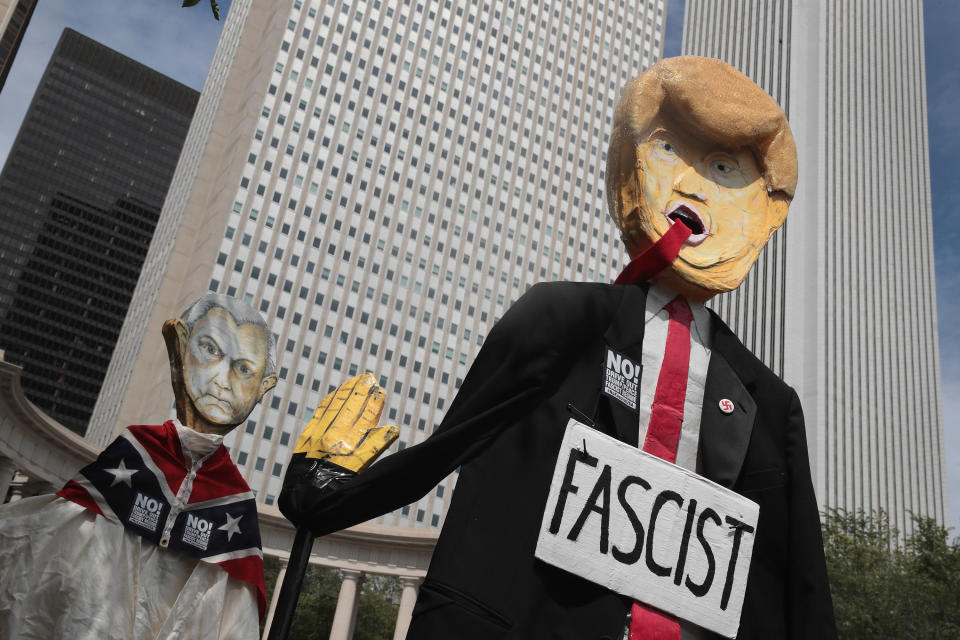
The alt-right might have been active before 2016, but Trump’s candidacy ushered a new generation of white supremacy onto the national stage. Not since Nixon has a president so openly courted fascists and racists.
Antifa I spoke with have reported an uptick of new, younger members in response. And older members are swinging back into action, too, either actively or in quieter, supporting roles. “We got motherfuckers coming up out of the bathroom tiles like ‘Terminator 2,’” Bello says. ARA chapters have reorganized across the country, and other groups, such as Redneck Revolt, a pro-worker, anti-racist organization with almost 30 branches nationwide, have readied for action.
But while the alt-right might have copped its ideology from old-guard neo-Nazis and Klansmen, many of its leaders are savvy propagandists. And antifa violence is easy for them to exploit, especially when inflicted upon preppy antagonists.
“To a large extent, the narrative within antifa circles is kind of machismo. It’s about winning battles against the Nazis,” says Cas Mudde, an extremism expert and professor at the University of Georgia. “If you actually beat up 25 big, bulky skinheads, the battle has been won. If you beat up Polo-wearing kids in the suburbs, what have you achieved?”
One ill-considered punch can now obscure the more meritorious blows. Already faded from collective memory are episodes like the one in Charlottesville when antifa fought off baton-wielding white supremacists who were about to attack a line of clergy. (“Antifa saved my life twice on Saturday,” said Rev. Seth Wispelwey, a local minister.) Far more potent are the viral videos, like the one of antifa in Berkeley flattening a MAGA bro. They allow conservatives to brand all antifa as dangerous extremists — in part to create a convenient alibi for their own more dangerous extremists.
And far-right extremists are far more dangerous. A report from the Combating Terrorism Center at West Point found that from 1990 to 2012, far-right extremists were responsible for 670 fatalities, 3,053 injuries and 4,420 violent attacks in the United States. No such data exist for antifa, but in the three decades of antifa’s organized existence in America, only one known fatality caused by a member of an antifa group has been recorded, when in 1993 a multiracial skin shot a Nazi skin during a fight at a gas station in Portland and was convicted of manslaughter.
Nevertheless, Trump and others frequently portray the violence as an equal problem on “both sides.” In an ouroboros of political dishonesty, right-wingers have even taken to attacking antifa with comparisons to the most toxic elements of the Republican base. In August, Marc Thiessen, a Washington Post columnist and former staffer for the racist Sen. Jesse Helms, wrote that antifa are “no different from neo-Nazis.” In September, Attorney General Jeff Sessions likened antifa to the Ku Klux Klan. And then there are extremists such as Gavin McInnes, a Vice co-founder and the leader of the Proud Boys, a Trump-supporting racist “fraternity,” who consistently tries to brand anti-fascists as “fascists.”
Less than a week after antifa stepped in to protect clergy from violent fascists and white supremacists in Charlottesville, a White House petition was created to declare antifa a terrorist organization. It garnered hundreds of thousands of signatures within days. (The Department of Homeland Security under President Barack Obama had reportedly already classified antifa’s activities as “domestic terrorist violence.”)
At the end of November, Christopher Wray, the FBI director appointed by Trump after the president fired James Comey, told the House Homeland Security Committee that the bureau was investigating a number of people “who are motivated to commit violent criminal activity on kind of an antifa ideology.”
By then, far-right propagandists had been smearing antifa for months. Many of them, including Lucian Wintrich, a Gateway Pundit writer who is credentialed by the White House and pals around with white supremacists, hyped a conspiracy theory about how antifa “supersoldiers” planned to mass-decapitate white parents and start another American civil war. An official magazine of the National Rifle Association published a scare story that depicted antifa as brutal thugs and claimed that “when the TV cameras are absent, the far left secretly agrees with [the] goals” of this “violent, disgusting and destructive” movement.
“If you just look at the discourse today within Breitbart or the NRA or even Tucker Carlson, they make the case that these are the storm troopers of the Democratic Party,” Mudde says. “It is very problematic in that it distracts from the alt-right, which is already a bit of a distraction from the structural racism in the Republican Party.”
Some antifa elect to pursue nonviolent tactics as a matter of both practicality and public relations. Daryle Lamont Jenkins runs One People’s Project, which does deep research into the organizational networks and funding sources of the far right. To Jenkins and other like-minded activists, information warfare is more important than ever as the alt-right tries to insinuate itself into the conservative establishment and the political mainstream. Jenkins has also pulled several Nazis out of the movement and helped rehabilitate them.
One of Jenkins’ longtime colleagues, Laura Sennett, takes it a step further. Sennett is a photographer and middle-aged Jewish suburbanite who lives in the Washington area. She got into activism after covering a neo-Nazi rally in Toledo, Ohio, that turned into a riot. “Sometimes when I want to shock people, I say, ‘I’m an antifa,’” she tells me. ”And they look me up and down. I’ve got my regular clothes and my nails and my perfume. I look like an art teacher,” she says. “But if I tell people I’m anti-fascist, I get, ‘Oh, that’s wonderful! More power to you.’”
Sennett tries to connect with white supremacists and change how they see the world. The self-described “antifa yenta” has, for instance, baked cookies for Richard Spencer and tried to sprinkle different ideas into his diet. She is critical of violence for violence’s sake, particularly what she calls the “fuck shit up” culture among Berkeley antifa. “Their anti-fascism is becoming a tool for fascism. You have to choose between what makes you feel better and what is actually right and effective.”
But activists like Sennett and Jenkins are a minority. “I have been shunned by people in the antifa community because I suggested a diversity of tactics that weren’t the standard,” Sennett says. “We’ve got to do something that’s violent or vandalism. And for some reason if you do anything that diverts from these kinds of tactics, you’re a traitor.” (Her approach hasn’t helped her avoid attention from law enforcement: In 2008, the FBI raided Sennett’s home and seized her computers, cameras and memory cards, seeking pictures she’d taken of an anarchist demonstration.)
If the militant antifa I spoke to were concerned that social media could be used against them, they didn’t elaborate. “No matter how good we are, it’s going to happen anyway. We’re going to get vilified,” Bello says. Some antifa argued that fisticuff videos simply attract more supporters to their cause. White nationalists made the same argument. Spencer has called the punch he took a good thing because “it woke up the whole movement” and pushed the alt-right into a new gear.
But antifa, too, were in a different gear, with new ARA chapters and other organizations forming around the country. Militant vets view the fight against white supremacists as a war. “I don’t see those two groups standing across from each other 10 to 15 times more and there not being significantly more violence,” Mudde says. “And then we have a different situation.”
So what, ultimately, does one old antifa head think is to be done about the scrubbed-up, boy-next-door alt-right? What, in other words, should he do about Pepe?
“Punch anybody who wears it.”
CORRECTION: A previous version of this story misstated the last name of Lin “Spit” Newborn as Newman.
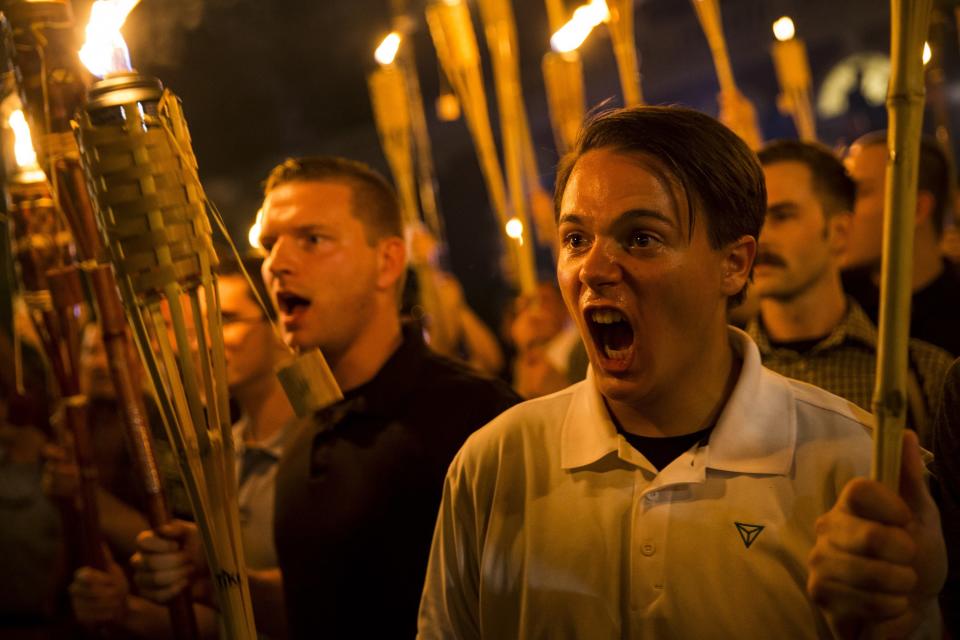
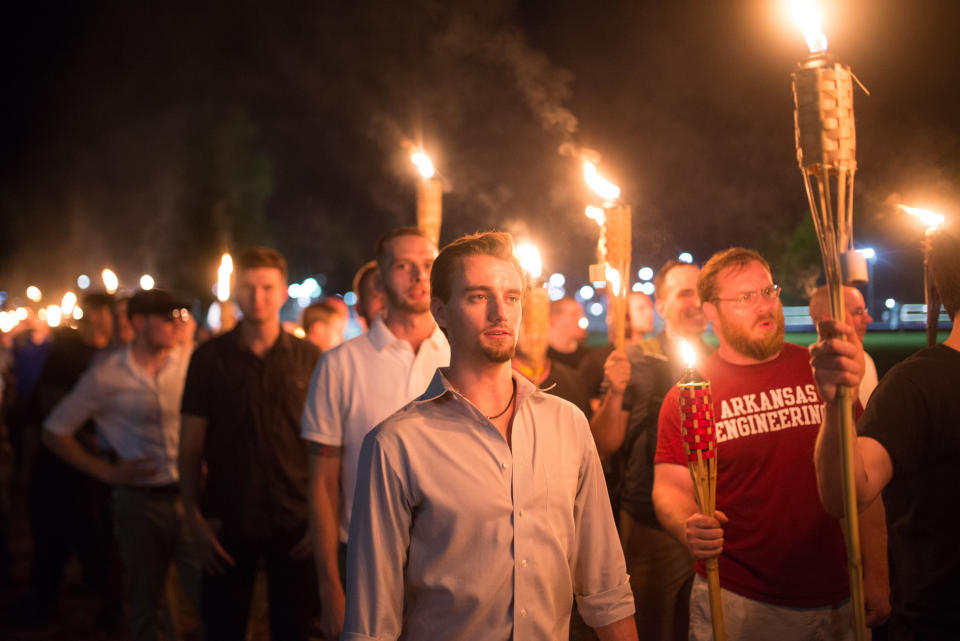
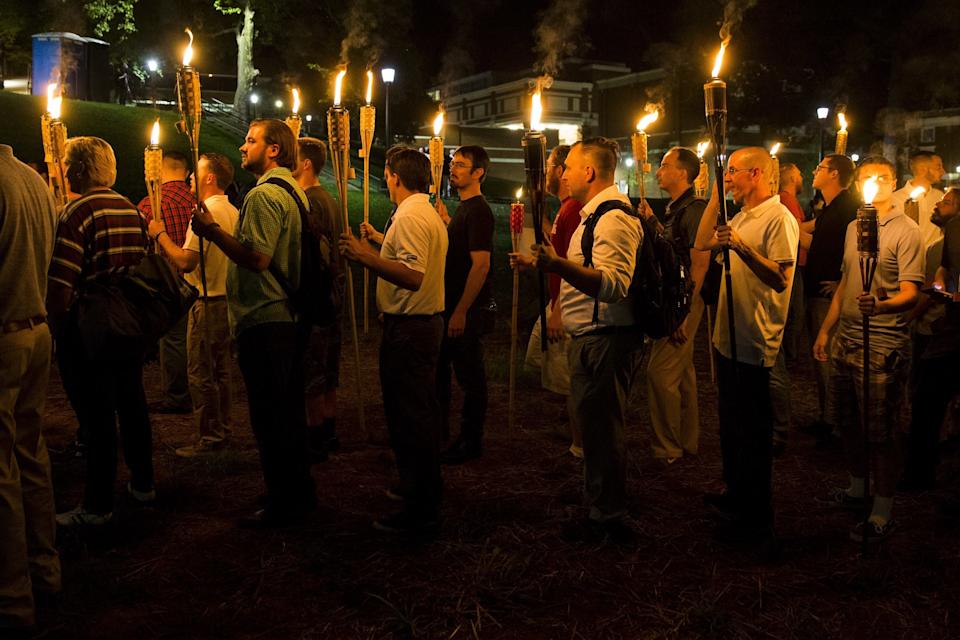
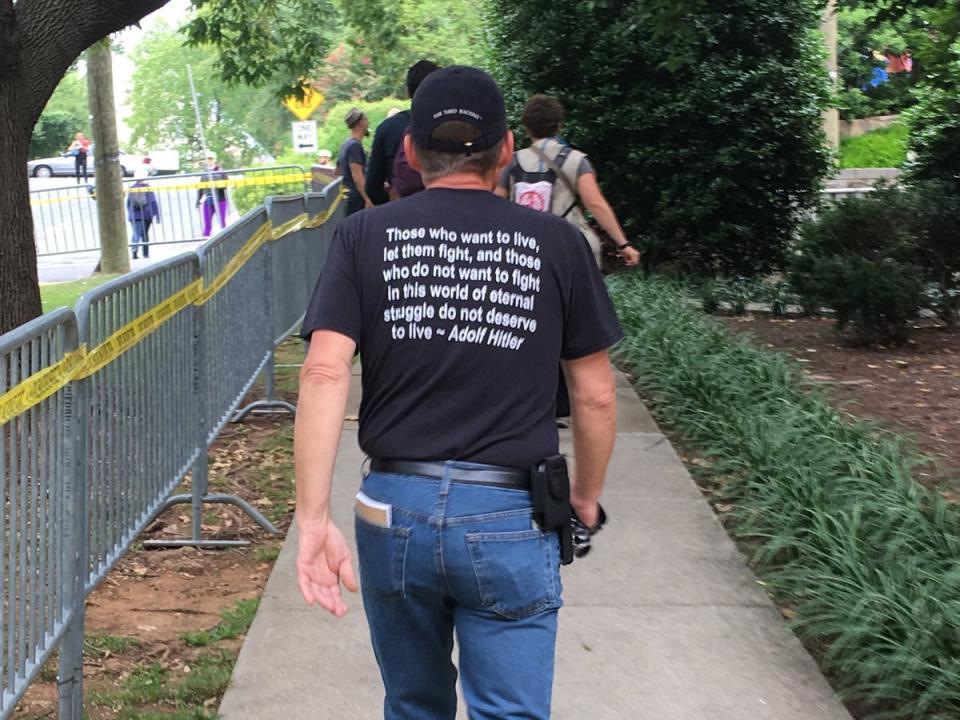
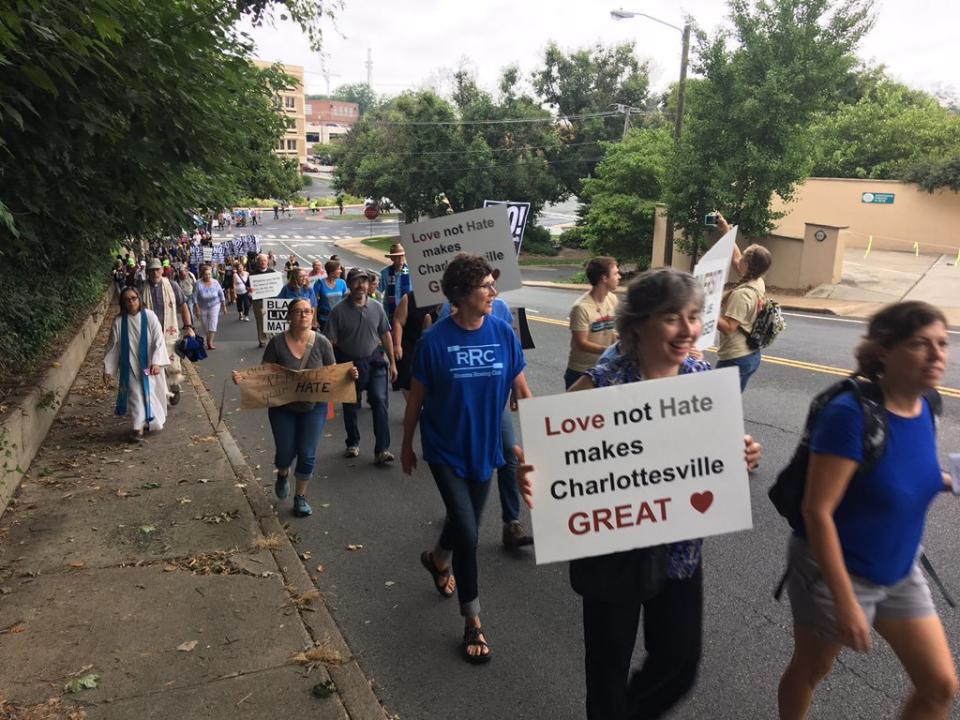

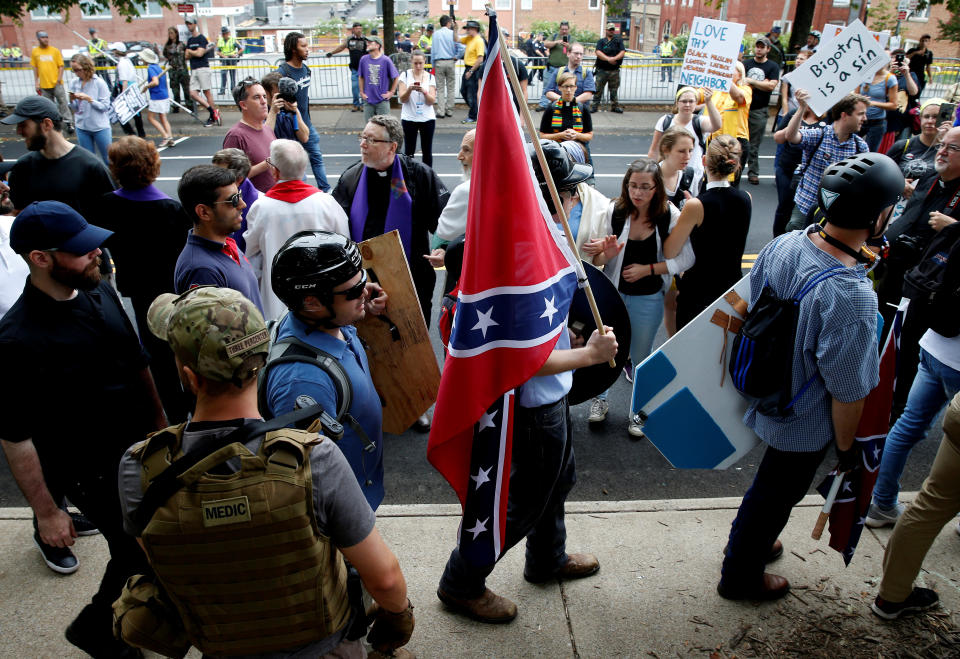
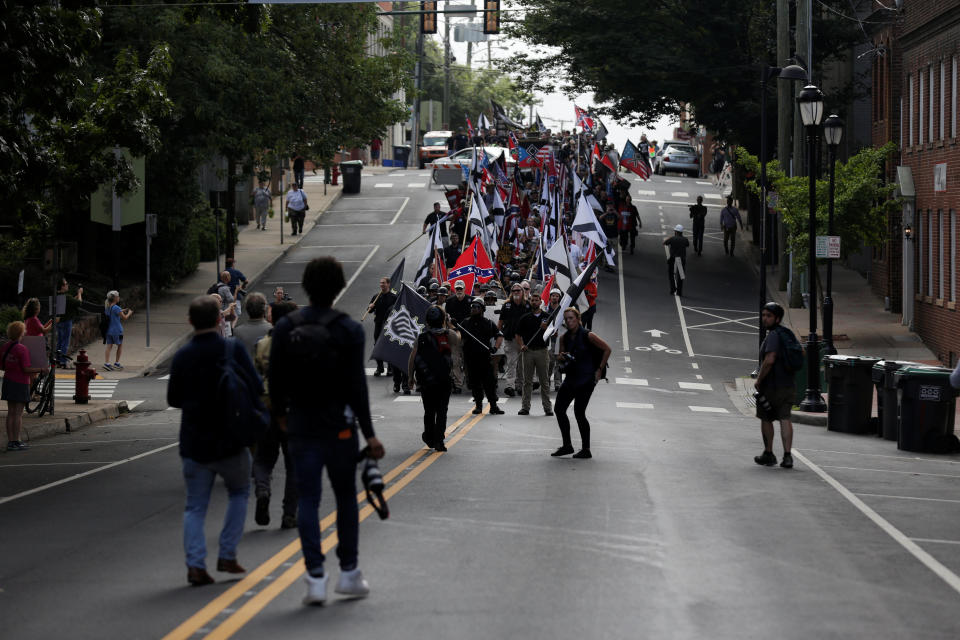
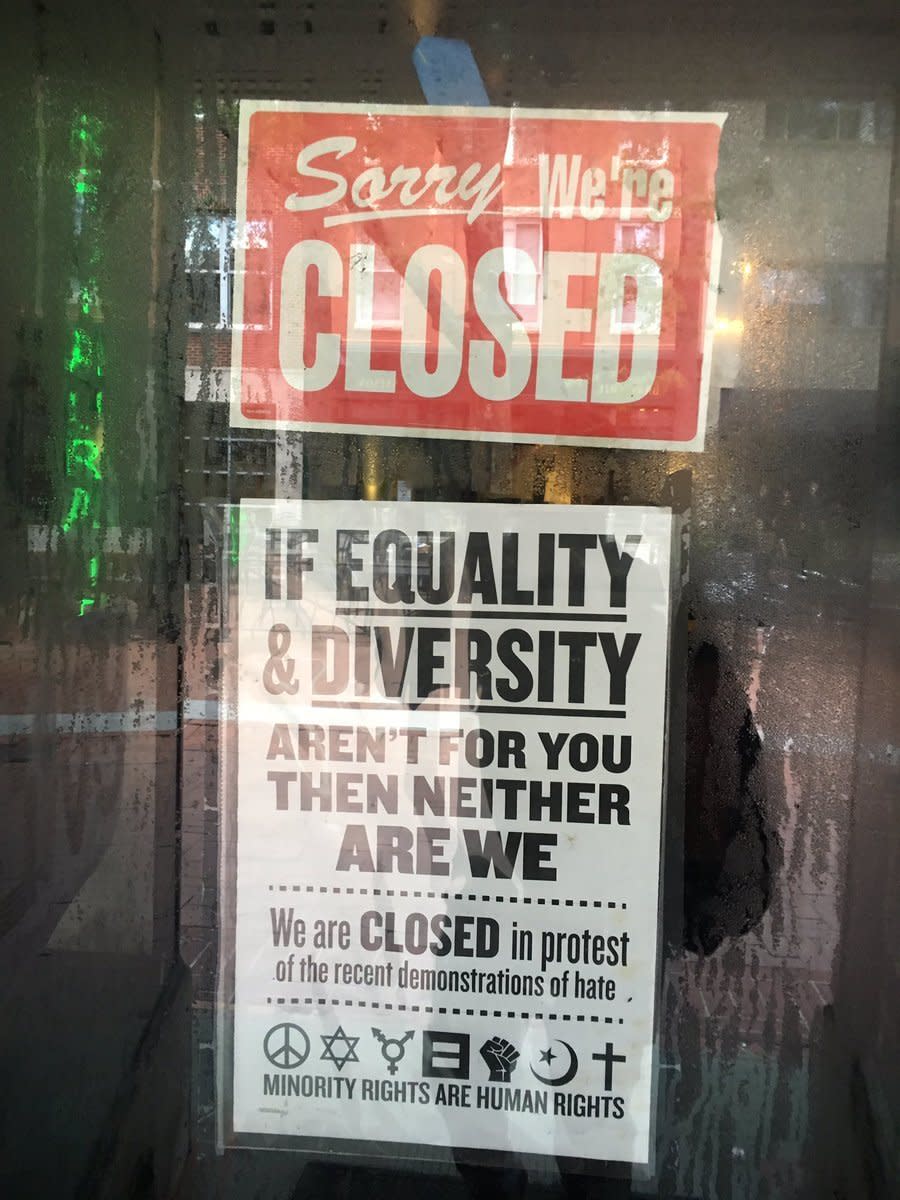



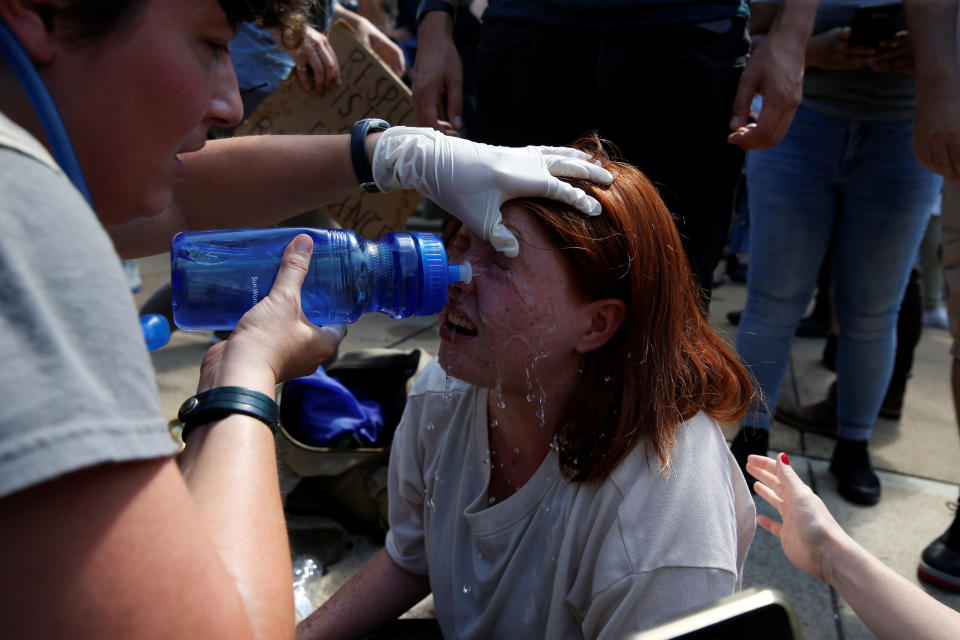
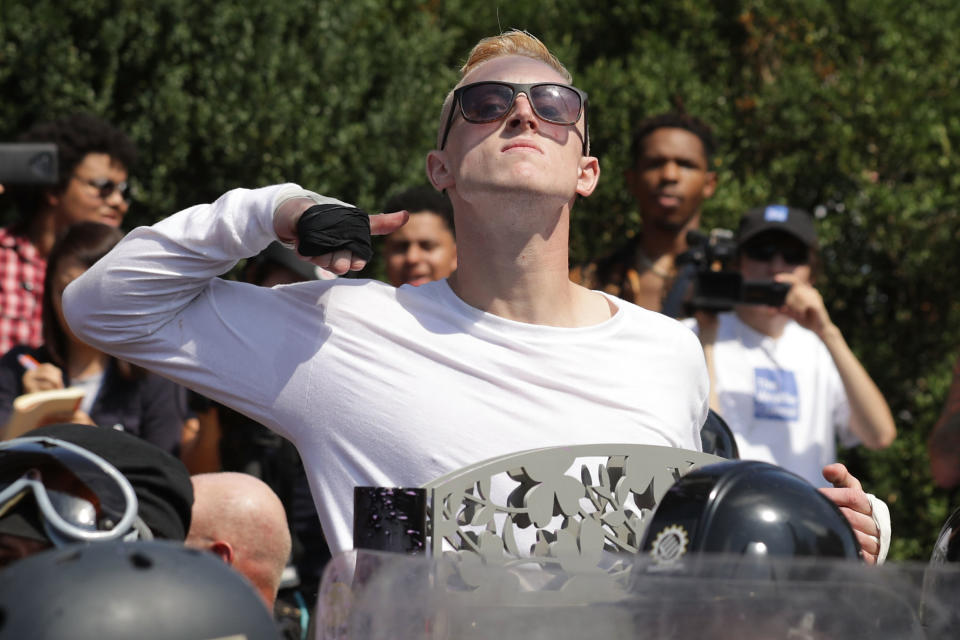

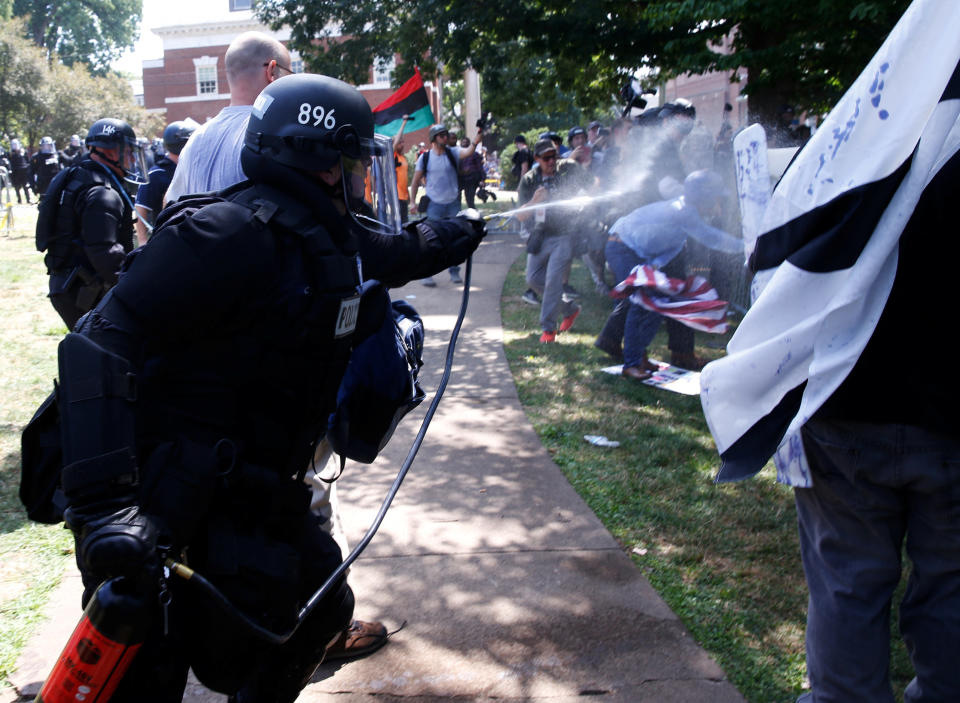
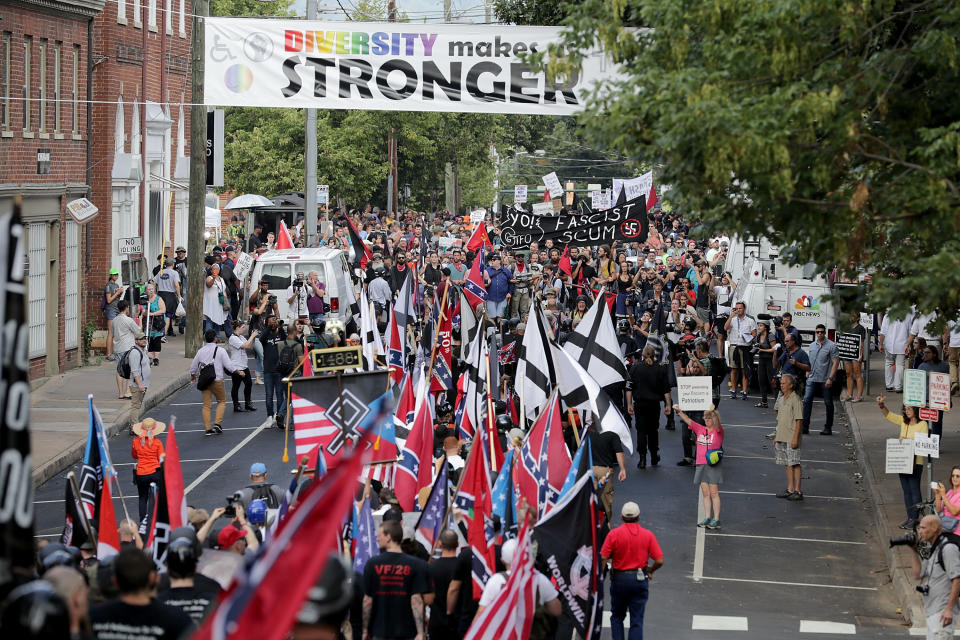
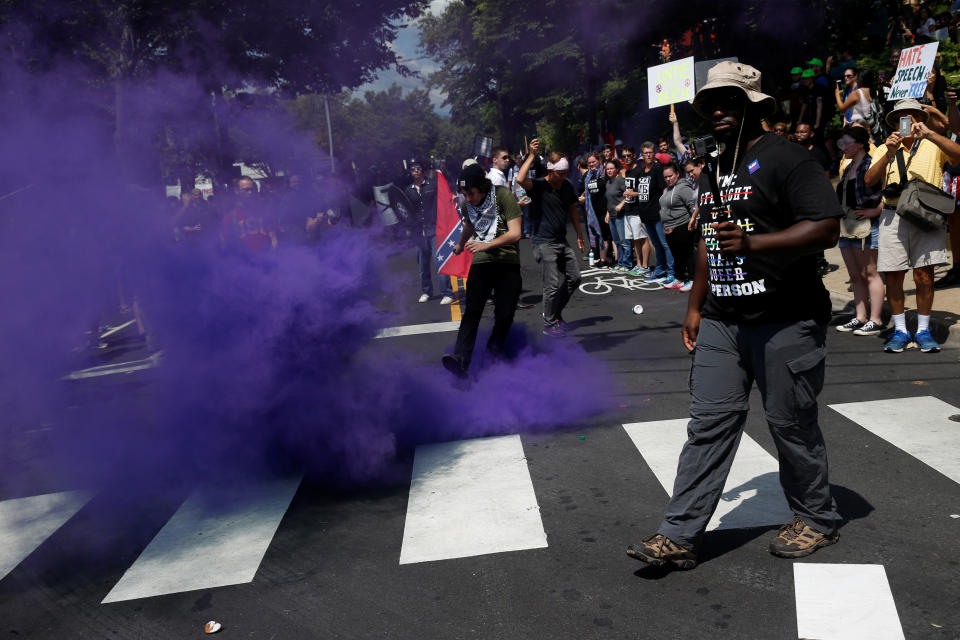
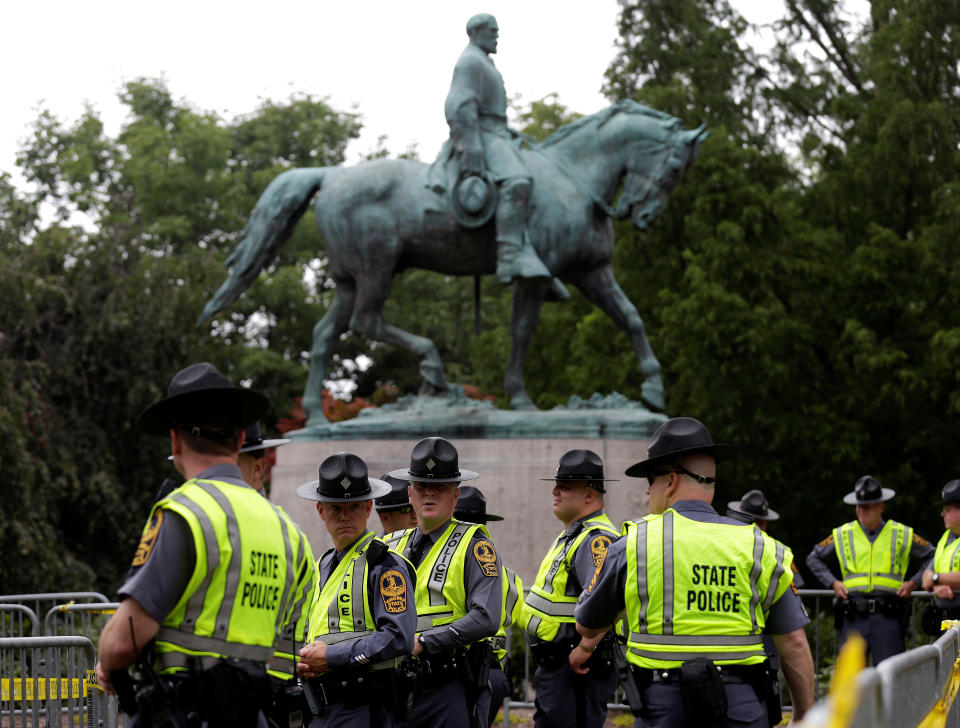
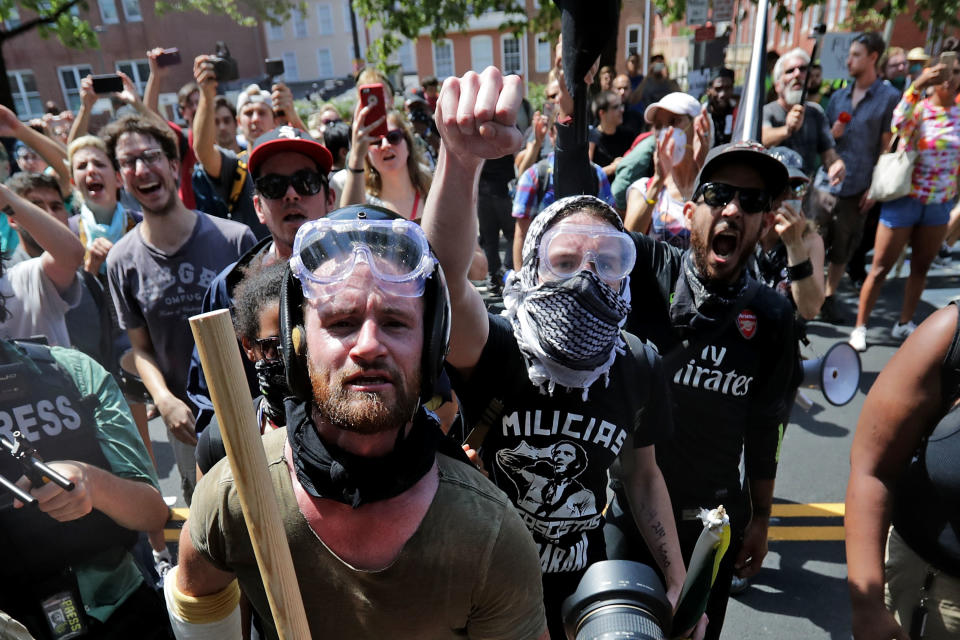
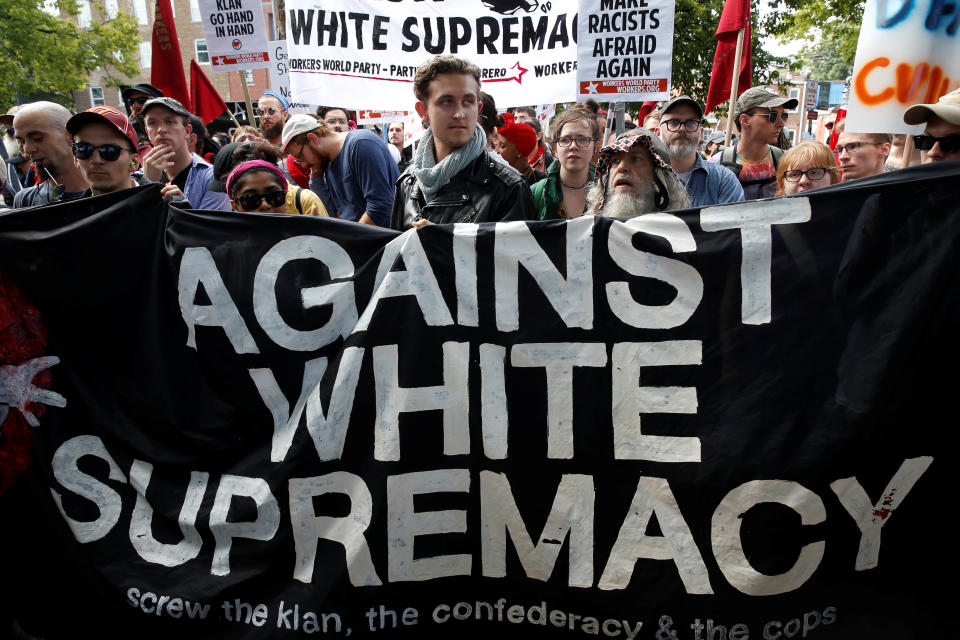
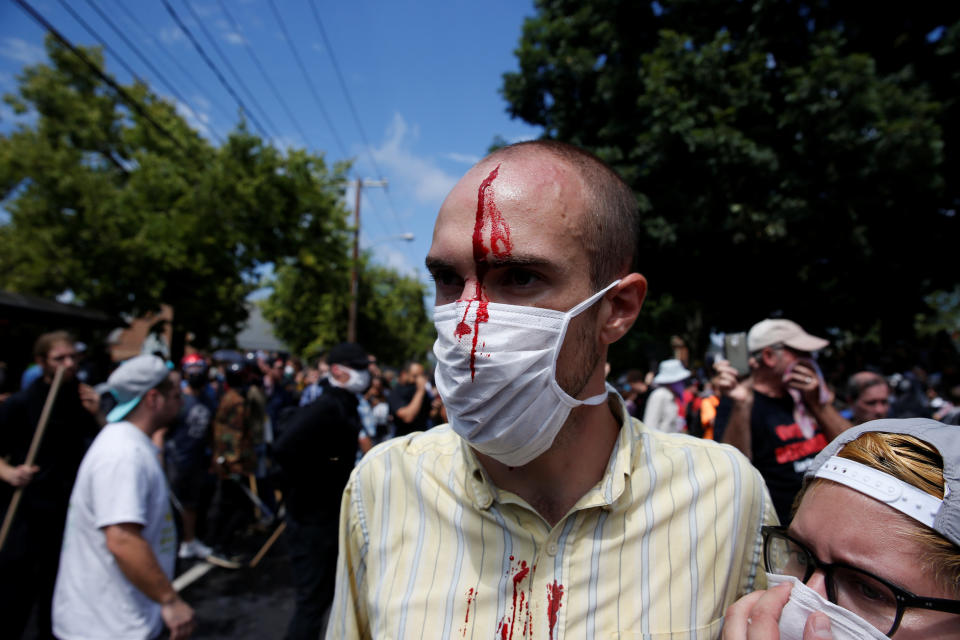
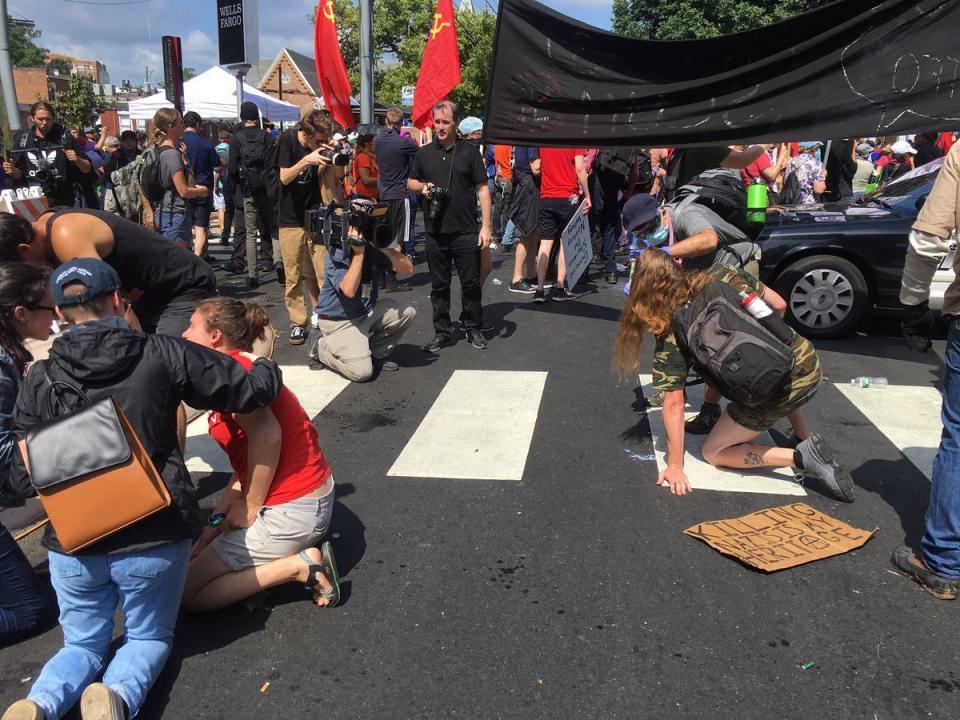
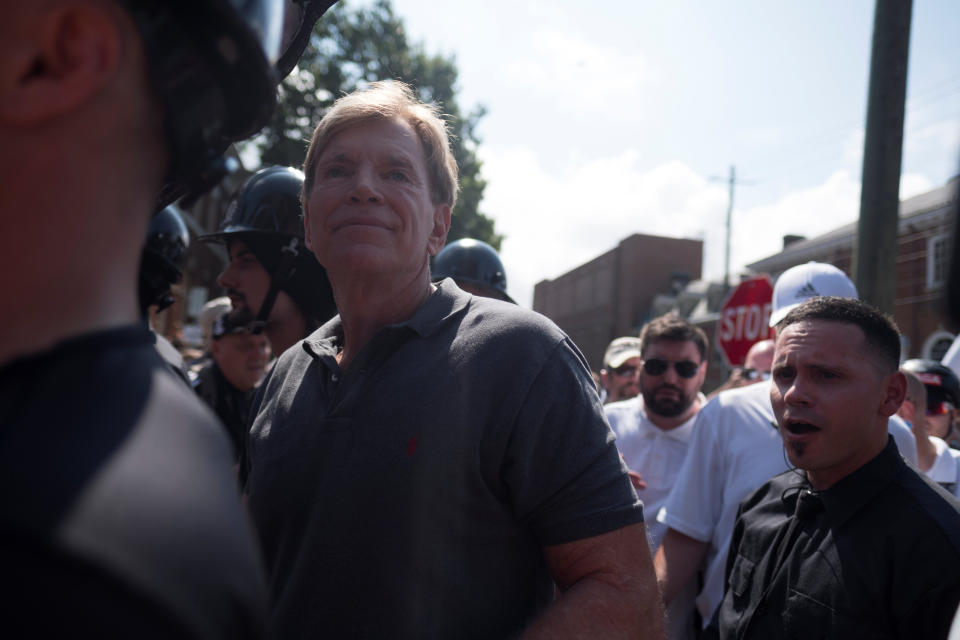
Also on HuffPost
New Orleans March Against White Supremacy
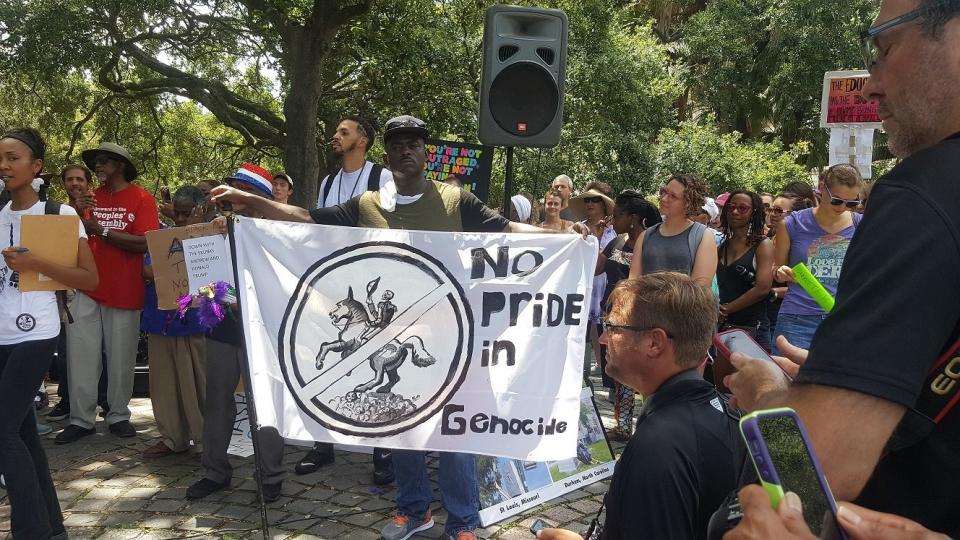
New Orleans March Against White Supremacy

New Orleans March Against White Supremacy

New Orleans March Against White Supremacy

New Orleans March Against White Supremacy

New Orleans March Against White Supremacy

New Orleans March Against White Supremacy

New Orleans March Against White Supremacy
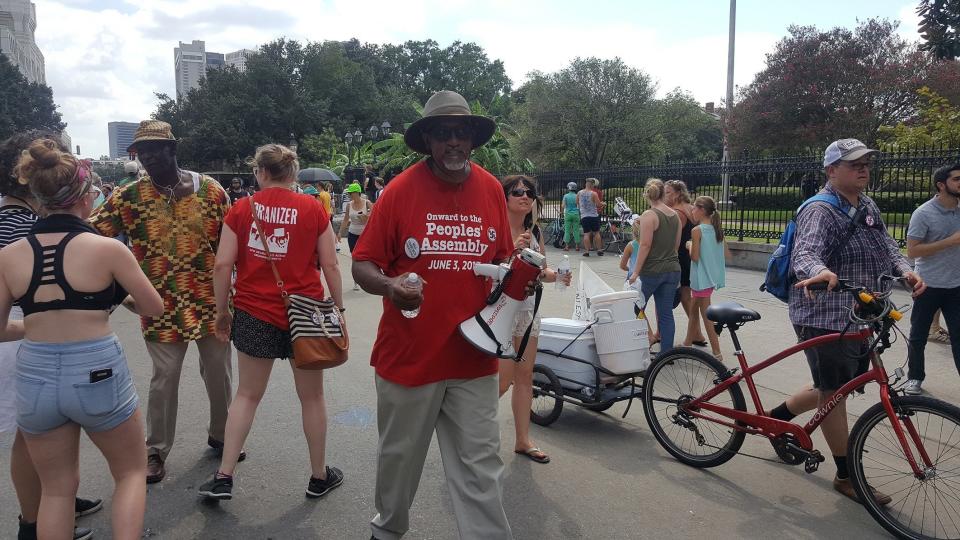
New Orleans March Against White Supremacy

New Orleans March Against White Supremacy

New Orleans March Against White Supremacy

New Orleans March Against White Supremacy

New Orleans March Against White Supremacy

New Orleans March Against White Supremacy

New Orleans March Against White Supremacy

New Orleans March Against White Supremacy

New Orleans March Against White Supremacy

New Orleans March Against White Supremacy
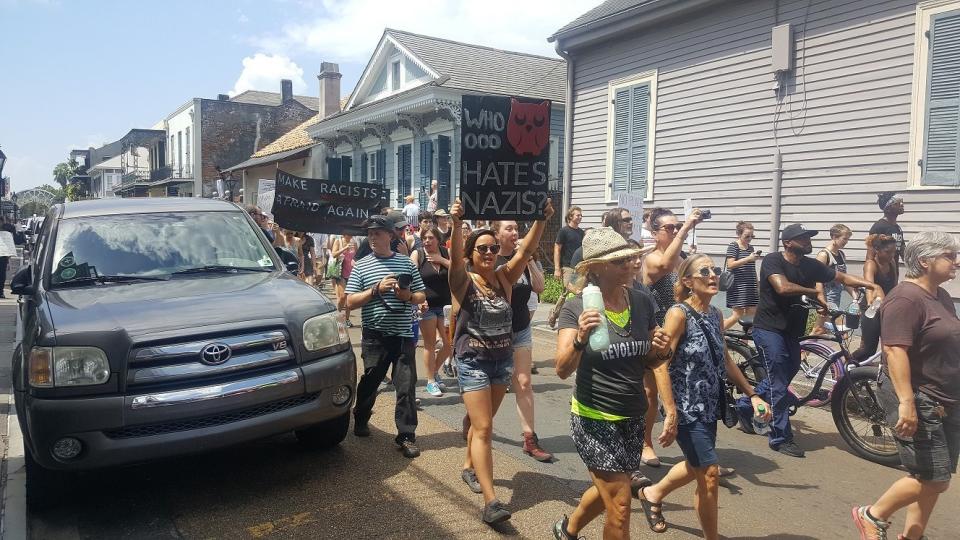
New Orleans March Against White Supremacy

New Orleans March Against White Supremacy

New Orleans March Against White Supremacy
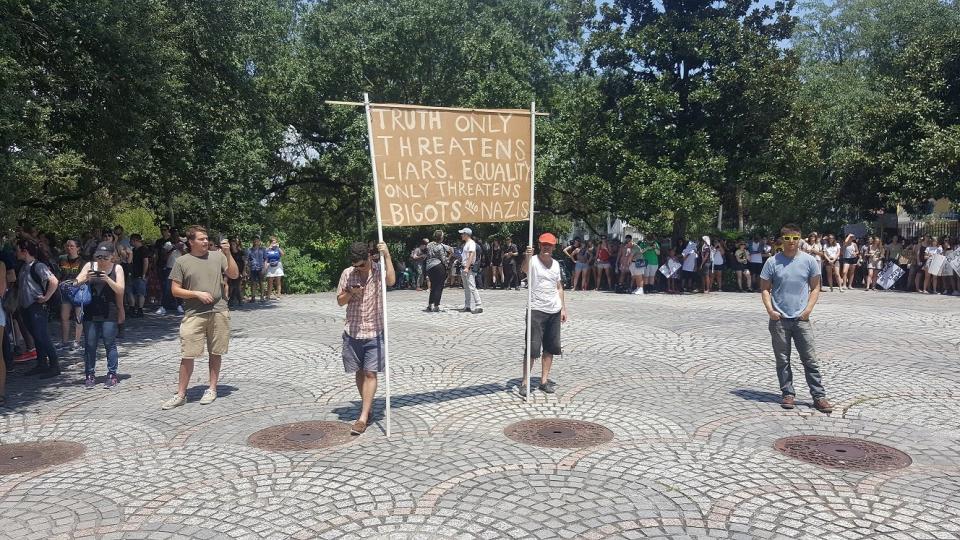
New Orleans March Against White Supremacy

New Orleans March Against White Supremacy

New Orleans March Against White Supremacy

New Orleans March Against White Supremacy

New Orleans March Against White Supremacy

New Orleans March Against White Supremacy
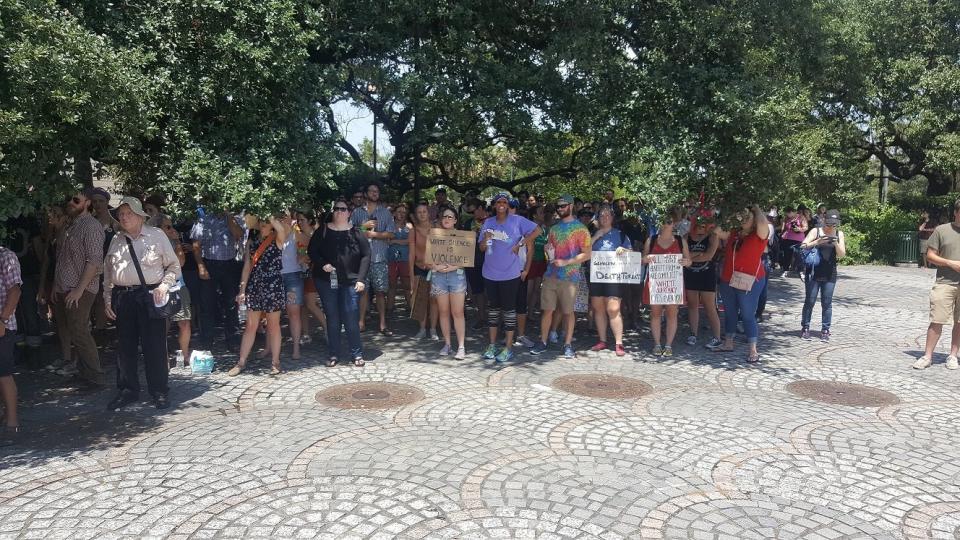
New Orleans March Against White Supremacy

New Orleans March Against White Supremacy

New Orleans March Against White Supremacy

New Orleans March Against White Supremacy

New Orleans March Against White Supremacy
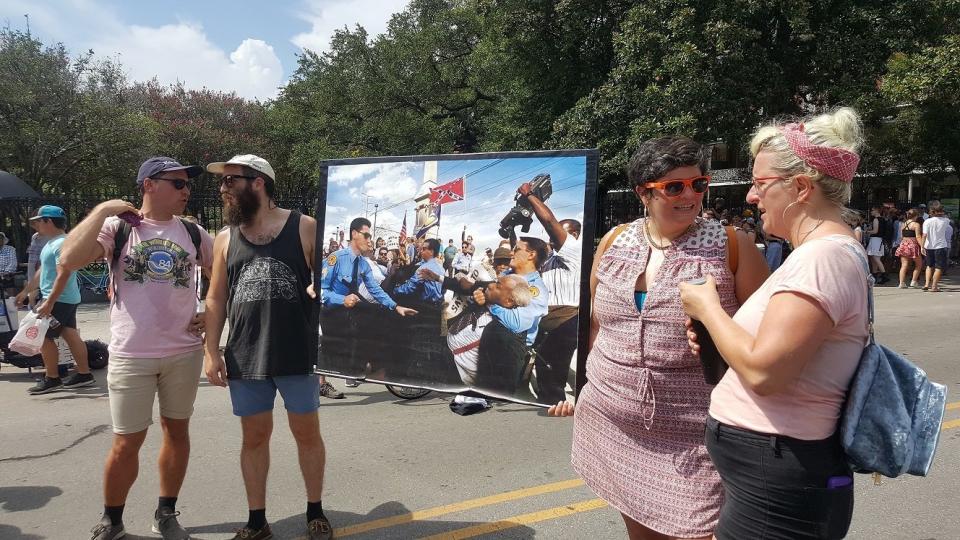
New Orleans March Against White Supremacy

New Orleans March Against White Supremacy

New Orleans March Against White Supremacy

This article originally appeared on HuffPost.

